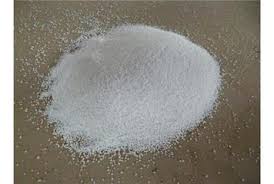
Understanding the Differences Between Vermiculite and Perlite for Gardening and Horticulture
Understanding Vermiculite and Perlite Key Growth Media for Horticulture
In the world of horticulture, soil composition plays a crucial role in the health and growth of plants. Among the many growing media available to gardeners and commercial growers, vermiculite and perlite stand out as two of the most popular options. Although they are often used interchangeably, vermiculite and perlite possess distinct characteristics that cater to different gardening needs. This article explores the unique properties, uses, and benefits of vermiculite and perlite to enhance understanding of these vital horticultural materials.
Vermiculite Structure and Properties
Vermiculite is a natural mineral that undergoes a heating process to expand into lightweight granules. It has a unique layer-like structure, which provides an excellent capacity for moisture retention. This property makes vermiculite an ideal choice for planting seeds and establishing young plants, as it helps in maintaining adequate moisture levels without the risk of over-saturation.
One of the standout features of vermiculite is its ability to retain nutrients, which it holds within its layered structure. This characteristic is particularly beneficial in potting mixes or seed-starting mediums, where young plants require optimal nutrition during their critical early growth stages. Moreover, vermiculite has a neutral pH, making it versatile for various plant species and less likely to adversely affect nutrient availability.
Perlite The Light and Airy Component
In contrast, perlite is a volcanic glass that has been heated to a high temperature, causing it to expand and develop a lightweight, porous texture. Unlike vermiculite, perlite does not retain moisture. Instead, it facilitates excellent aeration and drainage in the soil. This property is particularly advantageous for plants that thrive in well-drained environments, such as succulents and cacti, which can suffer from root rot if their soil is too dense or retains too much moisture.
Perlite is often incorporated into potting mixes to enhance aeration, helping roots absorb necessary oxygen and preventing compaction over time. The addition of perlite to soil can boost its physical properties, enabling better root growth and overall plant health.
vermiculite e perlite

Comparative Analysis Vermiculite vs. Perlite
When deciding between vermiculite and perlite, it’s essential to consider specific gardening needs. Vermiculite is ideal for water retention, making it suitable for moisture-loving plants and seed germination, while perlite is the go-to option for growers seeking improved drainage and aeration. Both can be mixed in varying ratios to create a customized growing medium that meets the specific requirements of different plants.
Economically, both materials are relatively affordable and can be sourced from garden centers or online retailers. Their lightweight nature also makes them convenient for transporting and handling during gardening projects.
Application and Environmental Considerations
Vermiculite and perlite are widely used not only in home gardening but also in commercial horticulture, including greenhouses and nurseries. Innovatively, each material can be used in hydroponics and soil-less cultivation systems, where careful control of moisture and nutrients is required.
However, it’s crucial to consider environmental sustainability when utilizing these materials. While both vermiculite and perlite are non-toxic and inert, the mining of vermiculite must be responsibly managed to minimize ecological impact. Growers should look out for sustainably sourced products when selecting either material.
Conclusion
In summary, vermiculite and perlite serve as crucial components in horticultural practices, each offering distinct advantages. Understanding their individual properties allows gardeners to create optimal growing conditions for their plants. By leveraging the moisture-retaining qualities of vermiculite alongside the aeration benefits of perlite, gardeners can provide an ideal environment that fosters healthy root systems and robust plant growth. Whether for houseplants, vegetable gardens, or commercial cultivation, the right combination of vermiculite and perlite can significantly enhance gardening success.
Share
-
Premium Resin Coated Sand - High Heat Resistance CastingNewsJul.31,2025
-
High Quality Silicon Carbide Grit for Abrasive ApplicationsNewsJul.30,2025
-
High-Quality Ceramsite for Plants & Gardening | Lightweight PebblesNewsJul.29,2025
-
Premium Burgundy Glass Marbles for Vases & Shooter GamesNewsJul.29,2025
-
High Purity Quartz Sand for Industrial and Ground ApplicationsNewsJul.29,2025
-
High-Quality Barite Powder for Drilling & Industrial UseNewsJul.29,2025






